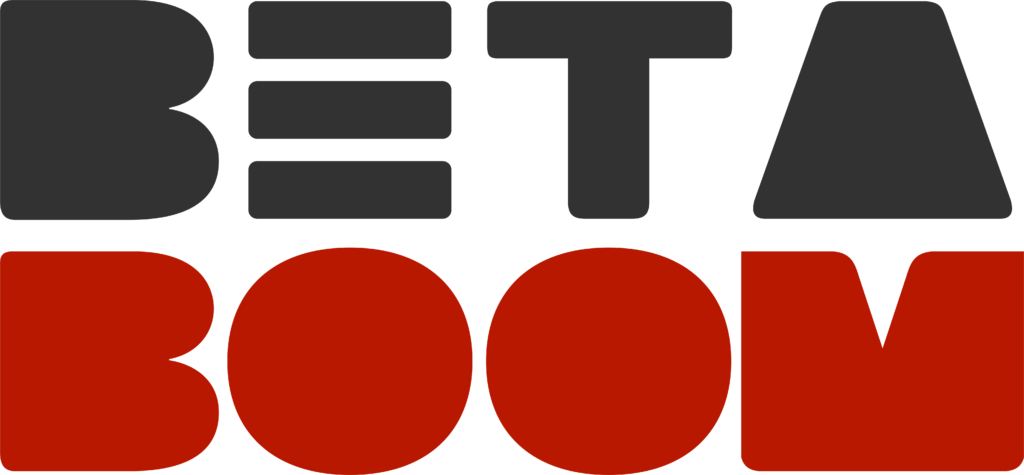As a venture capital investor, I have seen firsthand that the deck is stacked against founders that don’t fit the “Silicon Valley founder profile.” If you don’t have a diploma from an Ivy League college or a membership to an exclusive golf club, it can be difficult for founders to convince investors to take a chance on their early stage startup.
However, the beautiful silver lining is that you, dear founder, have a secret weapon: TRACTION.

I have seen it countless times now. Founders that couldn’t get the time of day from investors because they didn’t fit the “profile” are suddenly deluged with investor outreach.
The common differentiator is that those founders’ startups saw an explosion in traction.
Suddenly, investors didn’t care that the founding team wasn’t based in San Francisco, didn’t have a degree from Stanford, and didn’t even have a warm intro.
But what is important to understand is that there are different kinds of traction, and if you have them all, you’re holding a royal flush. And the best advice I can give you to increase your chances of success is: obsess on traction.
Below are the different elements of traction and how to combine them to make any investor drool over your startup.
Nominal User Numbers
When you are a raising a pre-seed or seed round, the number of people using your product can be a nice selling point to demonstrate that you have built something enticing.
What’s important to understand, however, is that it’s pretty easy to get users if you throw enough money at it. For example, I recently spoke with a startup that had 50,000 users.. after having spent close to $500,000 on acquiring them. That means that the bar for users is pretty high, and seed stage investors don’t really get that excited until your product has hundreds of thousand of users.
Plus, all users are not created equally. If you have a 100 college students using your app, that might be very different than 100 CEOs of Fortune 500 companies.
The main point here is that it’s great to show user numbers, provided that they are truly impressive. (You can usually find benchmarks for your market with a little Googling.) If your user numbers are not earth-shattering, focus on user growth, revenue, or any of the following indicators of traction.
Nominal Revenue
Revenue is much more impressive than users because it indicates that people find enough value with your product that they are actually willing to part with their hard-earned money for it.
You can almost think of revenue as being at least 10 times more valuable than users (maybe even 100x more). As an investor, I would probably be more impressed with a startup that is generating $10,000 in revenue than one that has 100,000 active users or 10 million inactive ones.
The reality, however, is that even at the pre-seed stage, where our firm invests, many startups are already generating revenue. At the seed stage, it’s almost a given that other startups vying for investment are doing revenue, and plenty of it.
In fact, I was recently speaking with two seed-stage VC investors. One is looking for $300K in annual revenue before they will seriously consider an opportunity, and the other is looking for at least $500K in ARR. What’s maddening is that the bar will probably rise even more before the year is out.
It’s frustrating not knowing what is a revenue benchmark that you should be aiming for, particularly because every time you look up, the goal posts have moved. However, don’t be afraid to ask those investors with whom you are interacting, where their benchmarks sit for your stage of investment. They might dance around the issue or give you a vague answer, but you might also get some up-to-date data on where you should stand to be competitive.
Unfortunately, the bad news is that most VCs have random benchmarks on nominal revenue. The biggest question here is how can you get to those revenue goals with the resources you have. That’s why it’s critically important that you are extremely effective with your resources. Don’t just build features for the sake of it or run marketing campaigns that don’t have a clearly positive return on investment.
If your startup’s revenue is not where it needs to be, you can still focus on the traction metrics below such as revenue growth and engagement.
User Growth
What would impress you more: a startup that has 50,000 users and had 49,500 users last month or a startup that went from 1,000 users last month to 15,000 this month?
We at Beta Boom take into account both nominal user numbers and growth rate when we evaluate investment opportunities, and many other VC investors do as well. Even if you don’t have hundreds of thousands of users, if your user growth rate is explosive, investors will likely take notice.
Most of the startups that we look at have user growth rates of less than 20% monthly, so if your startup’s numbers are much higher than that, certainly highlight them for investors.
Revenue Growth
Much like user growth, revenue growth might be an even more impressive indicator of traction than nominal revenue itself. Once again, what would you find more impressive: a startup whose revenue last month was $49,500 and is $50,000 this month or one whose revenue went from $1,000 last month to $15,000 this month? Even though the second startup is generating less revenue, their revenue growth rate is astounding. I’d probably want to talk to the second one.
Revenue growth benchmarks are similar to user growth ones with most startups at the seed stage growing less than 20% month-over-month. If your startup’s monthly revenue growth rate is over 20%, definitely highlight that for investors.
In many cases, your revenue might have seasonality or just be a little “bumpy” from month to month. For example, your revenue might have been $5,000 this month, but it was $20,000 last month. In cases such as this, it’s legit to use a 3-month, 6-month, or 12-month average.
Of all the metrics in this article, I would say that revenue growth is king (or queen). Investors’ ears greedy nerves really start to tickle when they see monthly growth rates in the 30%, 40%, 50% and up range, so make sure to give it the attention it deserves.
Engagement
Is strong engagement as compelling as revenue or revenue growth? Honestly, probably not to many investors. But if you have strong revenue, revenue growth and engagement numbers, boy, will investors be curious to learn more.
Even if your startup doesn’t have blockbuster revenue or growth, you can still paint a compelling picture for investors with strong user engagement.
There are many different ways to measure engagement, such as the ratio of daily active users to monthly active users (which basically tells you what percentage of your users use your product daily), but that is a big topic worthy of its own post at some point in the future. For now, do a little Googling to find ways to measure user engagement, and for a bonus, try to find your industry’s benchmark and see how you compare.
Retention
Retention is a little different than user engagement, but it can still be a very strong indicator that you’ve built something valuable to people. For example, 99% of your registered users might log in at least once a month (high retention), but there is a difference between 90% of them using your app every day versus only 1% using your app daily. Same retention, different level of engagement.
What’s most impressive is when your paying users stick with your product, particularly when they have to pay a monthly subscription. If 99% of your paying users stick around from month to month (also known as low “churn”), that’s pretty amazing, and investors are sure to notice. In fact, if I had to choose my second personal favorite measure of traction, paid customer retention would be it. Even if you had just a few dozen paying users but 99% of them stuck around from month to month (1% churn rate), that would definitely make me want to learn more.
Luckily, many payment gateways such as Stripe automatically measure your churn rate, so if it’s less than 5%, you should probably call that out in big bold letters for investors.
Lifetime Value (LTV)
Getting a little more into the numbers, lifetime value (LTV) can be another great indicator of traction. If you’re not already familiar with this term, “lifetime value” is an estimate of how much revenue you can expect to make from an average customer.
If your LTV is much higher than other startups in your space, definitely promote your numbers with investors because it means that you not only have a compelling product but also a winning business model.
In fact, I can tell you from my side of the table that we often come across investment opportunities where the startup is making good revenue, but as we dig into the numbers the LTV turns out to be relatively small, and it’s hard to imagine how such a company can scale financially.
LTV/CAC Ratio
The second part of demonstrating strong business model is your company’s ratio of lifetime value to customer acquisition cost or LTV/CAC ratio. The reason why this is so important is that
For example, if your startup is making $100 from every customer (LTV) but is spending $105 to acquire each customer (CAC), you do not have a viable business model. The more money you make, you’ll be losing even more.
Different industries or verticals have different benchmarks, but a LTV/CAC ratio of at least 3 is what you’re probably aiming for. For SaaS companies, an outstanding ratio is closer to 10.
Once again, it’s usually possible to find a LTV/CAC benchmark with a little Googling. If your ratio is higher than industry standard, you would be remiss not to shout it from the rooftops at investors!
Bonus: Fundraising Traction
The funny thing about investors is that most of them will only invest if other investors commit to your fundraising round. I find this amusing because they are essentially relying on others’ investment decisions to make their own. Obviously, this creates a systemic frictional force opposing your efforts to raise money for your startup. However, when played right, this lemming mentality can really unlock a torrent of investment.
Timing and staging are the most important components of building fundraising traction. Other investors will want to know both the total amount committed to your round as well as the velocity at which new commitments are coming in. For example, what makes investors lightheaded with excitement is when your round is 80% filled and new commitments are coming in on almost a daily basis. Of course, this almost never happens in real life, but let me tell you how to make the most of your fundraising traction.
First, fundraising is sales. The cardinal rule in sales is focus on the easiest sales first. Similarly, when you are reaching out to investors, do your research and prioritize those investors that are the most likely to invest! That might mean starting with local angel investors or de-prioritizing funds that only participate in $6mm seed rounds when you are only raising $2mm.
Take time to develop thoughtful criteria that will help you decide which VC funds, family offices, angel groups, etc. to focus on first. Consider how many investments they have made in your space, the size of rounds that they participate in, their geographic focus, whether they lead rounds, and any other factor that you think might be relevant.
Most importantly, start with those investors that you think will be the easiest to convince investing, so you can build some initial fundraising traction as you go into more difficult conversations.
Second, raise in batches. Rather than reaching out to 5 investors each day, reach out to a batch of 20 of your highest priority investors over a day or two and then spend the next 2-3 weeks following up with them. Once those conversations proceed to diligence or go stale, reach out to another batch of 20 or so. This will help create crescendos of interest that you can use to drive a sense of urgency among your investors.
There is a ton more to say on this topic, so perhaps that is a good excuse for a future post, but hopefully the above gives you a good start.
Drop the Mic with a Traction Chart-Topper
The way to make those VC investors freak is to show up to a diligence call with all the above–users, revenue, user growth, revenue growth, engagement, retention, fundraising traction all well above their respective benchmarks.
Realistically, it’s almost impossible to be outstanding in all the dimensions of traction mentioned above, but the more you can excel in, the better. Often founders see mediocre user or revenue growth, and they give up, when they could be working on improving their engagement and retention numbers. Just do as much as you can, and chances are that you will end up with a better hand than most other founders with whom you are competing for investment.

Beta Boom is a top pre-seed and seed VC fund investing in founders who don’t fit the traditional Silicon Valley mold.
More Resources: Top Pre-Seed Funds | Top Funds Investing in Women | Top Black-Led Funds | Top Latinx-Led Funds | Top Angel Investors | Best Startup Accelerators | Top FinTech Seed Funds | Top Health Tech Seed Funds | Angel Investor Guide | Complete Pre-Seed Guide

